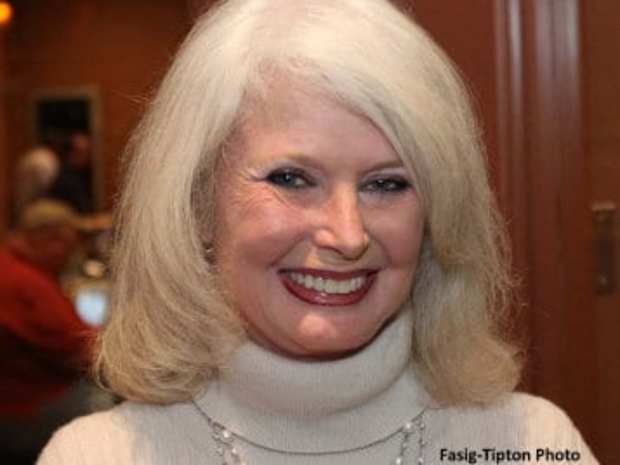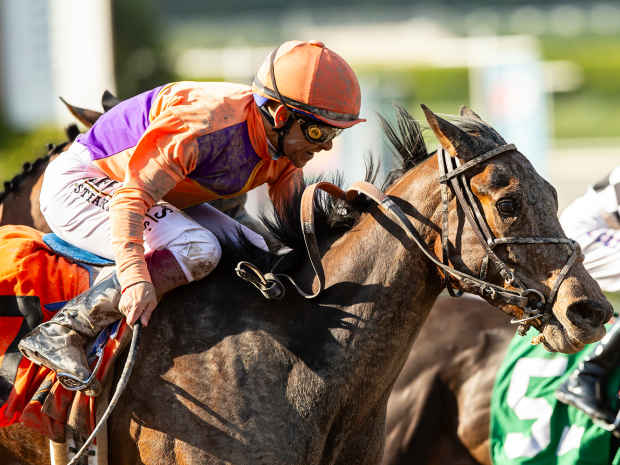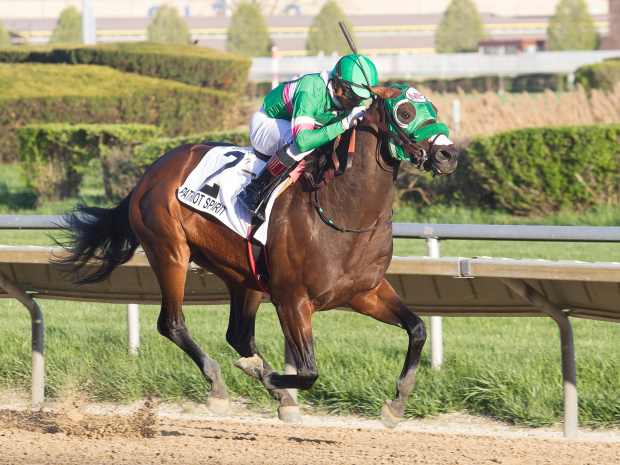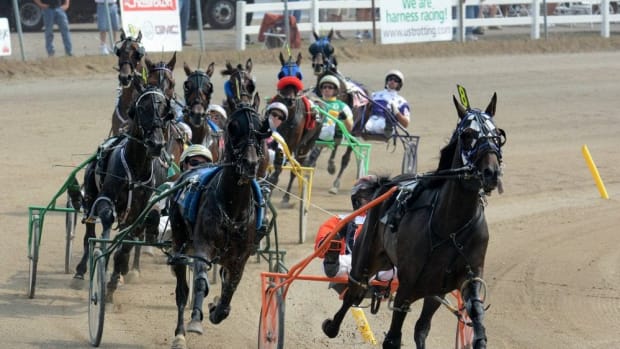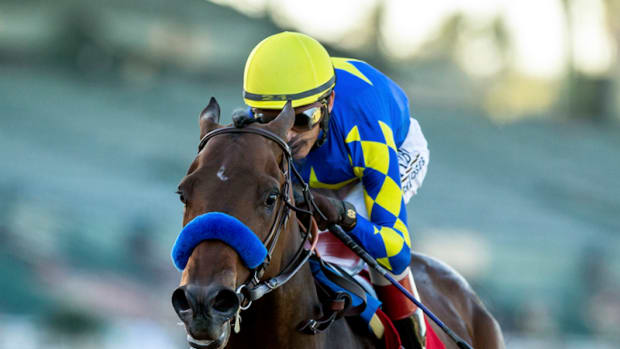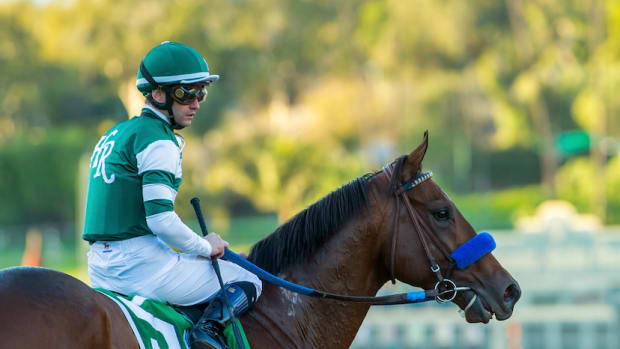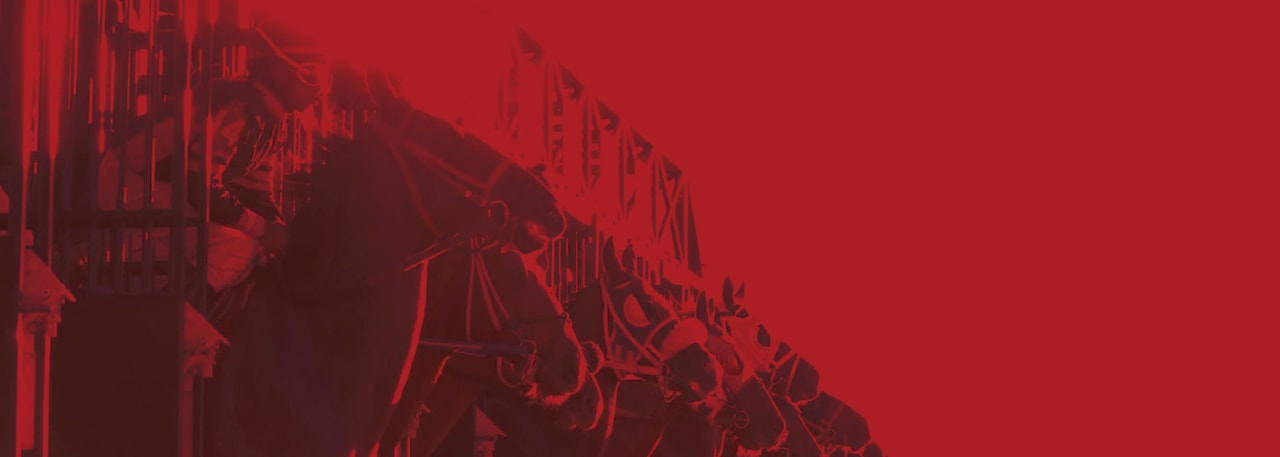Breeders' Cup Presents Connections: Peter Brant 'Happy To Be Back' In The Game
Peter M. Brant had quite a run in Thoroughbred racing in the 1970s and ‘80s.
There were Eclipse Award winners like Waya in 1979 and Just a Game in 1980, Grade 1 Kentucky Derby and G1 Belmont winner Swale – the champion 3-year-old he co-owned with Claiborne Farm – in 1984, and champion sprinter Gulch in 1988 – a horse durable and versatile enough to win the G1 Hopeful at 2, the G1 Wood Memorial at 3 and then the G1 duo of the Metropolitan Handicap and Breeders’ Cup Sprint at 4.
Homebred G1 winners Mogambo and Track Barron, among many others, made Brant one of the most high profile and successful owners and breeders in the game.
Then in the early 1990s, the man credited for moving Mr. Prospector from Florida to Claiborne Farm in Kentucky virtually disappeared from the racing scene. There were legal problems and a marriage breakup, and while Brant was no longer actively involved, he still had an impact on the game. Thunder Gulch, the 1995 Kentucky Derby winner, was bred by Brant as were the colt’s sire, Gulch, and dam, Line of Thunder. No individual has done that before or since.
By then, Brant was chasing his other equine passion, polo, where he became a top-ranked amateur player and one of the sport’s foremost patrons. Brant founded the Greenwich Polo Club in Connecticut and started the highly successful White Birch polo team in 1979. White Birch is also the name of Brant’s Connecticut farm, which is named after the White Birch Paper company he has run since the 1970s.
In addition to producing newsprint at White Birch Paper, Brant has put plenty of ink on paper, publishing the The European Racehorse magazine and Thoroughbred Record until it merged with the Thoroughbred Times in the late 1980s. He sold his interest in the latter publication in the early 1990s.
He’s also published Art in America magazine, The Magazine Antiques and Interview, the latter started by his friend, artist Andy Warhol. Brant is well known in art circles for a collection that includes numerous Warhol paintings.
Brant, 71, decided a few years ago that it was time to get back into racing. Encouraged and mentored by Joseph Allen, his cousin and partner in the paper business, Brant began to re-familiarize himself with Thoroughbred racing and breeding.
“I took about a year studying how the game had changed,” Brant said. “I spent a lot of hours with books and (statistical) records. I wasn’t exactly a neophyte, but besides following the big races I was pretty much out of it.”
He noticed some significant changes.
“The game when I was in it before had many big families involved as breeders and owners,” he said. “You still have the Phippses, but so many of the others have dispersed.”
He also saw that horses are racing less frequently.
“The style of training has changed,” he said. “Today you run more to win rather than use races to train. I’m sure the drugs used have something to do with that, too – the injections. Certainly more medication is used to train now than before.
“To me the real difference is the profile of a stallion – the number of mares you breed. There’s a race to getting the most mares to build a reputation for your stallion. As a result, the percentage of stakes winners for a stallion is so much smaller. In the 1970s, the best stallions had close to 20 percent stakes winners from foals. You won’t find that today. Back then you might see 13 to 15 yearlings by a stallion at a sale. Today you’ll have 60 or more.”
There is an upside to the bigger books, Brant observed.
Recommended for You
“If you own just 25 percent of a colt that is good enough to go to stud, that’s a lot of stallion power,” he said.
To emphasize that point, Brant added, when he did get back in the game he became a partner in some yearling purchases with Coolmore.
While he’s been away from Thoroughbreds for nearly a quarter century, Brant was still breeding horses – polo ponies.
“In polo, you’re looking for a smaller horse, maybe fifteen-one or fifteen-two hands,” he said. “You want a horse that moves well, that’s more like a miler, because they play for seven minutes. They should have good conformation and have softer mouths.”
In Thoroughbreds, Brant focuses on conformation and racing records in his breeding stock. “That was important then and now,” he said.
Brant wants to replicate his early venture into the sport, breeding to race. When he returned in 2016, he focused mainly on broodmares, including many from the Wildenstein Stable dispersal in Europe. He spent about $10 million at bloodstock sales in 2016 and nearly double that in 2017. Included were broodmares and broodmare prospects, plus a number of yearlings and 2-year-olds.
“I’m more active in buying yearlings now,” he said. “I’ll breed some and buy some. It takes a while to gear up.”
Some mares will stay in Europe while Brant’s U.S.-based breeding stock is at Claiborne Farm. “I’ve been with Seth (Hancock) at Claiborne from the very beginning,” he said. “For me they are the most direct and reliable people to be involved with.”
In the 1970s and ‘80s, Brant’s American horses were trained by Frank and David Whiteley, LeRoy Jolley and D. Wayne Lukas. “Wayne is a great manager, a great horseman,” he said.
Today, all of his U.S. racing stock – about 30 horses – are with Chad Brown in New York.
The star of his stable to date is Sistercharlie, an Irish-bred daughter of Myboycharlie purchased privately in Europe. A Group 3 winner in France, Sistercharlie won the Grade 1 Jenny Wiley Stakes at Keeneland this spring, then was second in the G2 New York Stakes on June 8 at Belmont Park.
“Sistercharlie is a real racehorse,” Brant said, adding that the filly had “a touch of pneumonia” after finishing second in the G1 Belmont Oaks last year, necessitating some time off.
“Winning the Jenny Wiley was pretty nice,” he said. “That felt to me like winning the Kentucky Derby.”
Brant is not approaching his return to the game casually.
“I talk to my trainer every day and I’m delighted to reacquaint myself with people I haven’t seen in a long time. I’m looking forward to Saratoga. It’s a great game and I’m really happy to be back in it.”

